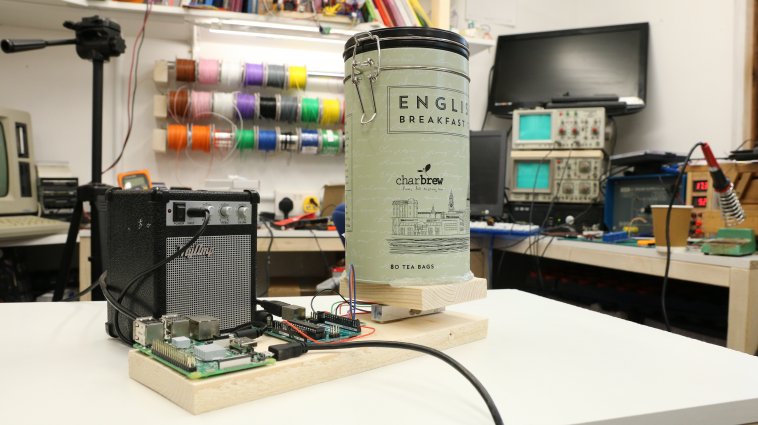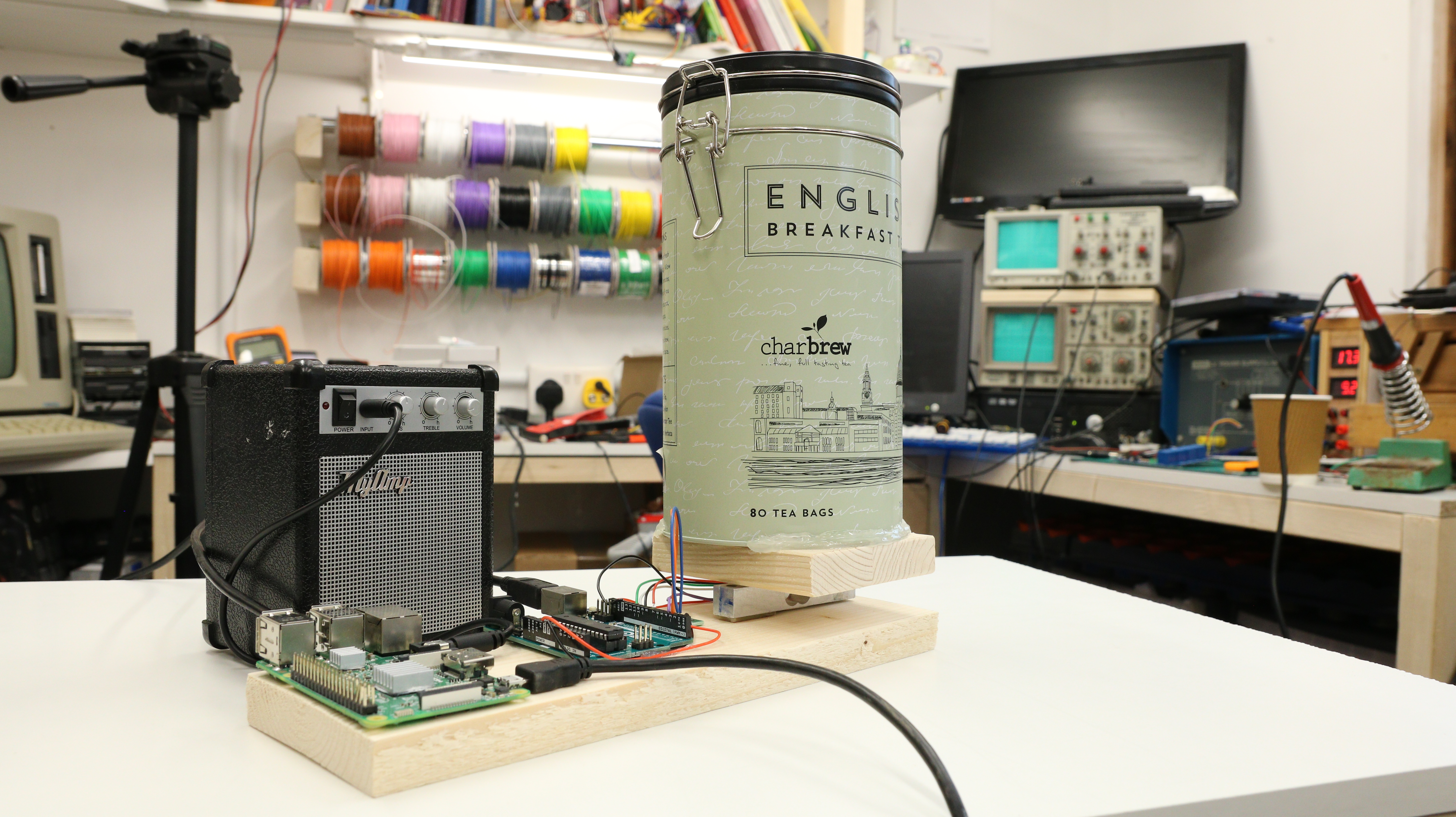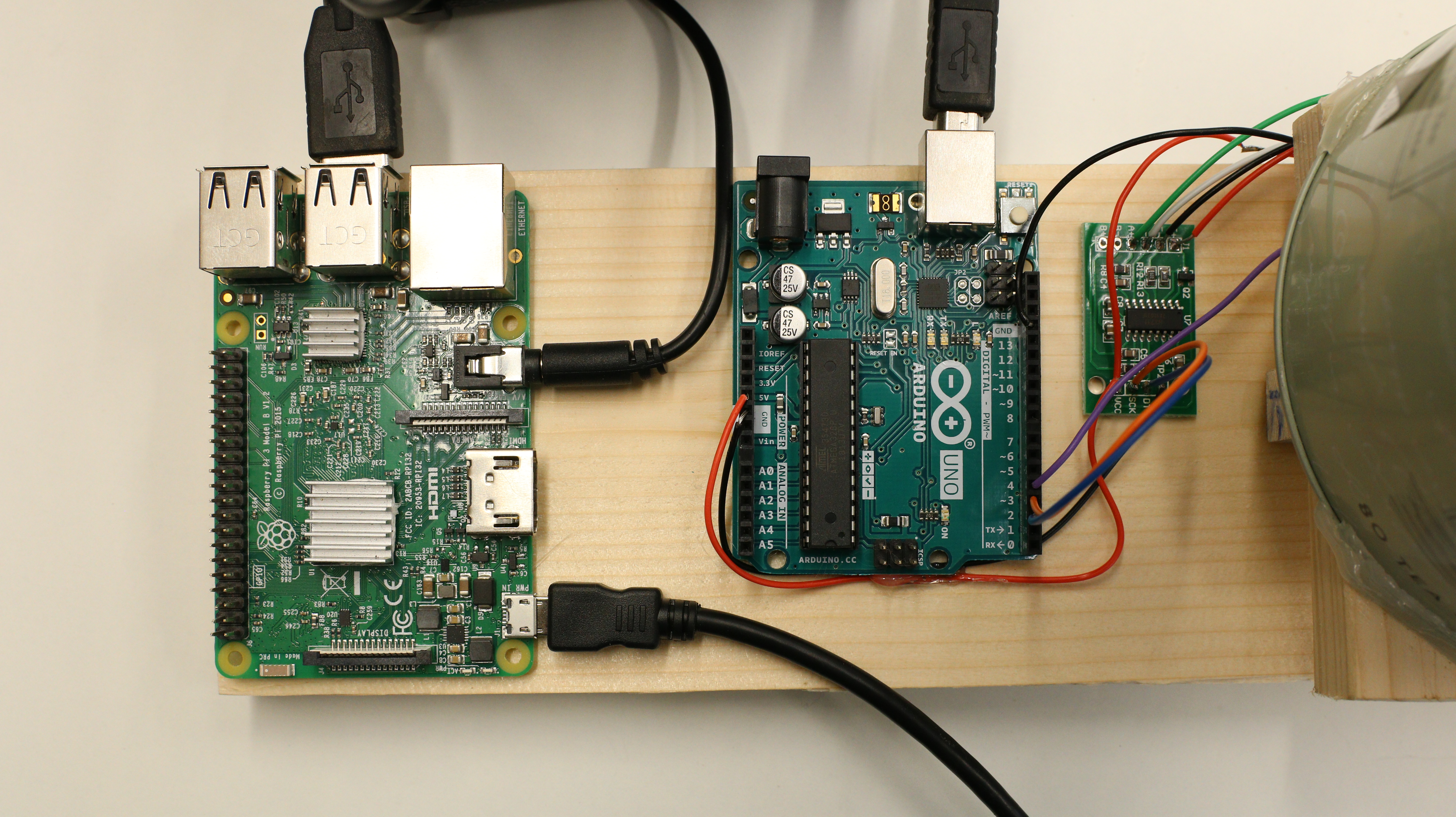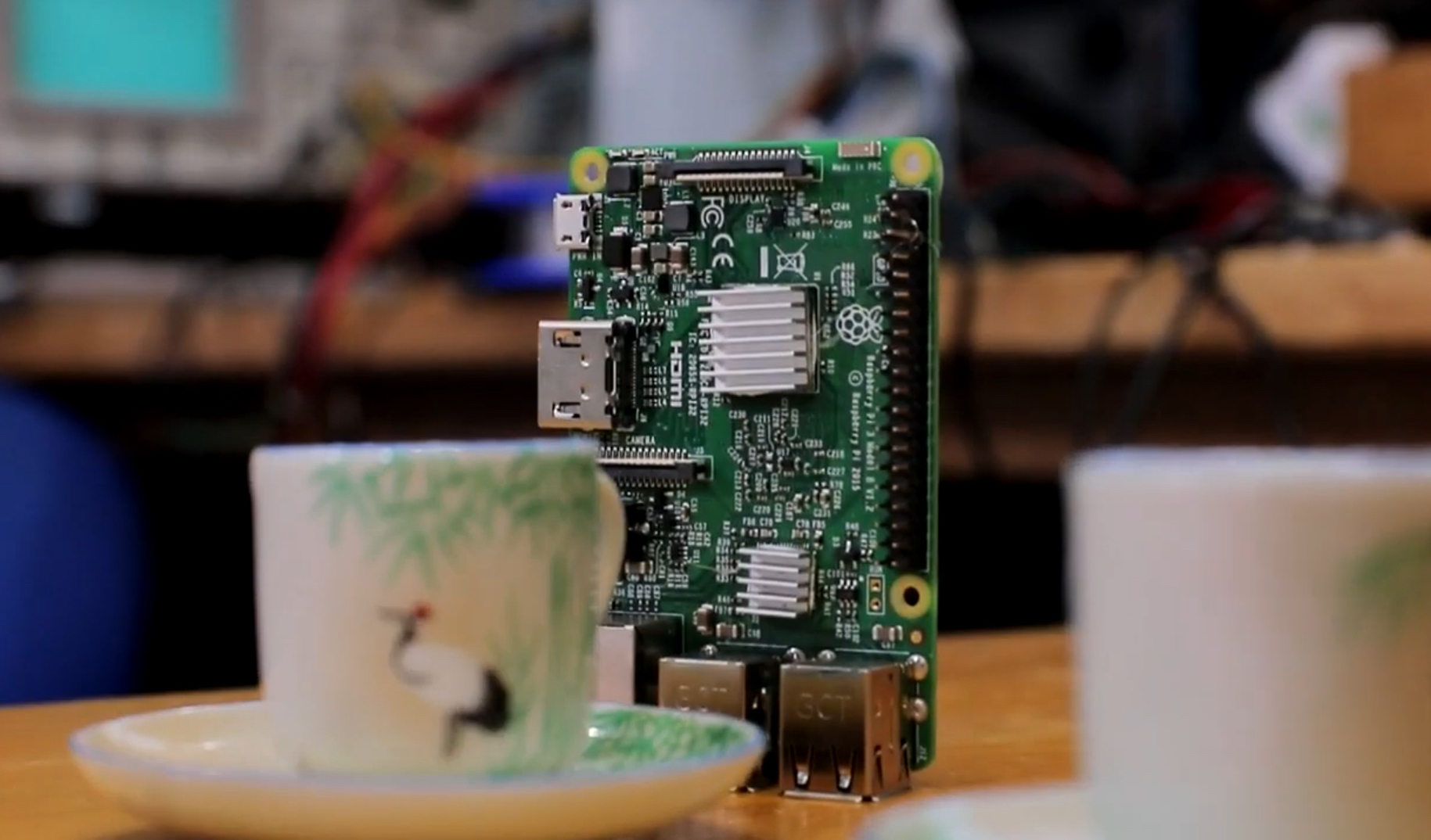Never knowingly run out of tea-bags again with this ingenious system, using a Raspberry Pi and Arduino to create a weight sensor and alarm.
Faced with the, almost unthinkable, problem of no tea-bags in the house, Robin Mitchell was inspired to contrive an invention that would eliminate the possibility of that scenario ever happening again, and the Intelli-T Raspberry Pi Sensor Alarm was born. As he explains, “One of the biggest problems that faces many British homes, as well as my own, is having a stable supply of tea… an issue with knowing how many tea-bags are available in the house. Hence, an intelligent tea-bag container was needed!”
Simplici-tea
Simple in its design, the project consists of only a few elements, as Robin tells us: “The first element is the weight sensor itself, which weighs the tea-bag container. This weight sensor is connected to a standard HX711 ADC, which is then read by an Arduino. The Arduino then sends the weight data to the Raspberry Pi, which can keep track of how many bags there are, and play interesting facts about tea when a tea-bag is removed.”
Clever, but as with many inventions, not entirely straightforward to construct, with the weight sensor providing the main issue, as Robin elaborates: “The problem with weight sensors is that they require plenty of fine-tuning and can be very noisy. While this is not a problem for heavier items, trying to accurately weigh tea-bags is a nightmare. On reflection, it would have been better to use a much smaller weight sensor, so that the weight of the individual tea-bags is larger with respect to the minimum weight that the sensor can register (this would improve the accuracy).”
Brewing ideas
Undeterred, Robin successfully completed his tea-bag detection system, and feels that this kind of weight-sensing system could easily be used in other projects. “One area that could benefit from a similar system would be industrial systems that need to count parts such as resistors, transistors, capacitors, and even potentiometers. Of course, part counting can also be useful for the everyday hobbyist who wants to keep check of their component stock, and someone like myself who stocks many thousands of parts needs to keep an accurate check on inventory regularly (as I own a small electronics business).”
There certainly appears to be some scope here for future projects but, as for tea-bag detection, Robin thinks he has taken that particular piece of work as far as he can. “The project was great fun, but since I no longer drink bagged tea (lemon tea rules!), I don’t have a use for it any more.”
Not that Robin is short of ideas for other projects. “Each day of my life is all about creating projects around many platforms, with the Raspberry Pi included. Only recently, I designed a simple IoT monitoring station for an IoT sensor that can be affixed to a drill, and the vibration data streamed to the Raspberry Pi via a local network. All I can say is that the Raspberry Pi is a fantastic platform for prototyping and project building!”
The MagPi magazine issue 81
This article is from the latest issue of The MagPi magazine, which is out today and can be purchased online, at the Raspberry Pi Store, or from many independent bookshops, such as WHSmith and Barnes & Noble.
You can also download issue 81 for free from The MagPi website, where you’ll also find information on subscription options, and the complete MagPi catalogue, including Essentials guides and books, all available to download for free.
Website: LINK






